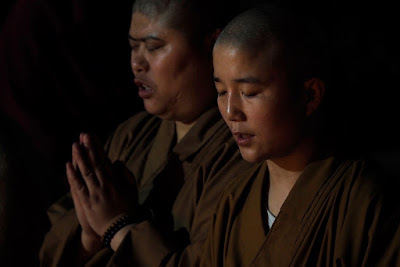Tonglen (tibetano: གཏོང་ལེན་, Wylie: gtong len, o tonglen), “dar y recibir”. Es una práctica de meditación del budismo tibetano. Un método para conectar con el sufrimiento propio y con el de todos los que nos rodean; ayuda a superar el miedo al sufrimiento.
(Wikipedia, La Enciclopedia Libre)
Del Libro Tibetano de la Vida y de la Muerte de Sogyal Rimpoché, Kham, Tíbet 1947-Bangkok, Tailandia 2019.
En la página 257, capitulo trece:
¿Qué significa realmente poder enviar a alguien a la Luna si no sabemos ayudar a otros seres humanos como nosotros a morir con dignidad y esperanza?
La atención espiritual no es un lujo reservado para unos pocos. Es el derecho esencial de todos los seres humanos, tan esencial como la libertad política, la asistencia médica y la igualdad de oportunidades. Un auténtico ideal democrático tendría que incluir la atención espiritual para todos como una de sus verdades esenciales.
“Quien desee obtener rápidamente protección para sí mismo y los demás debe practicar este secreto sagrado: intercambiarse uno mismo por los demás”.
En el prólogo del libro el Dalai Lama nos dice:
“No menos importante que prepararnos para nuestra propia muerte es ayudar a otros a morir bien. Cuando nacemos, todos nos hallamos desvalidos e impotentes, y sin el cuidado y el afecto que recibimos entonces no habríamos sobrevivido. Puesto que los moribundos no son capaces para valerse por sí mismos, deberíamos de aliviar su malestar y su angustia y asistirlos en la medida de lo posible para que mueran con serenidad”.
La brisa de la tarde esparce los pétalos.
Las piedras del camino reflejan la luz
que se oculta tras las montañas.
Tonglen (Tibetan: གཏོང་ལེན, Wylie: gtong len, or tonglen), "give and take". It's a meditation practice from tibetan buddhism. A method of connecting with one's own suffering and that of all those around us; it helps to overcome the fear of suffering.
(Wikipedia, The Free Encyclopedia)
From the Tibetan Book of Life and Death by Sogyal Rinpoche, Kham, Tibet 1947-Bangkok, Thailand 2019.
On page 257, chapter thirteen:
What does it really mean to be able to send someone to the Moon if we don't know how to help other human beings like us to die with dignity and hope?
Spiritual care is not a luxury reserved for a few. It is the essential right of all human beings, as essential as political freedom, health care and equal opportunity. A true democratic ideal would have to include spiritual care for all as one of its essential truths.
"Whoever wishes to obtain prompt protection for himself and others must practice this sacred secret: exchanging oneself for others”.
In the prologue of the book the Dalai Lama tells us:
"No less important than preparing for our own death is helping others to die well. When we are born we are all helpless and powerless, and without the care and affection we receive then we would not have survived. Since the dying are not able to look after themselves, we should relieve their discomfort and anguish and assist them as far as possible to die serenely”.
The evening breeze blows the petals away.
The stones of the road reflect the light
that hides behind the mountains.










































